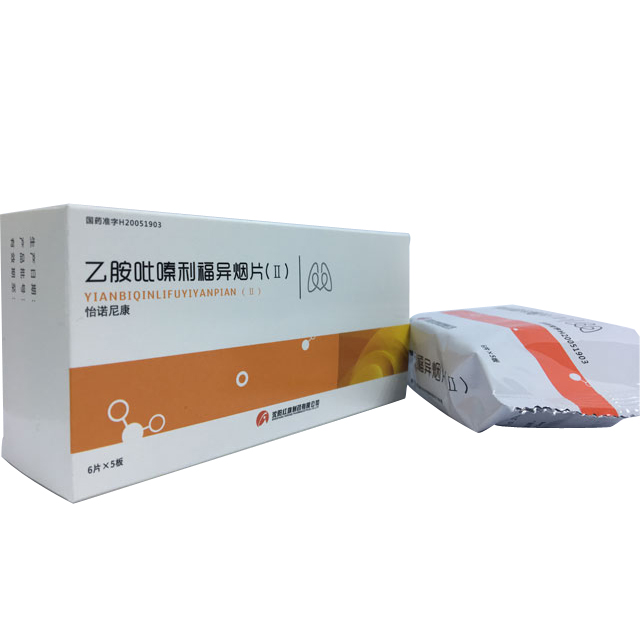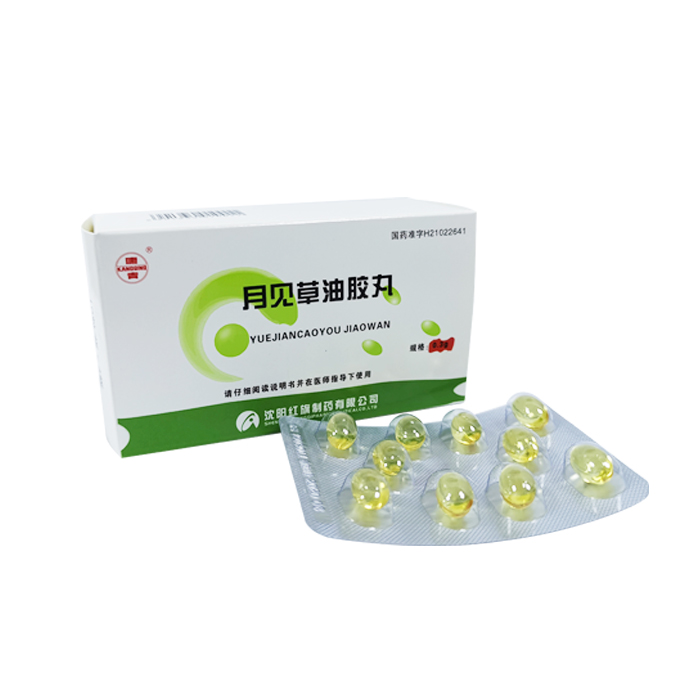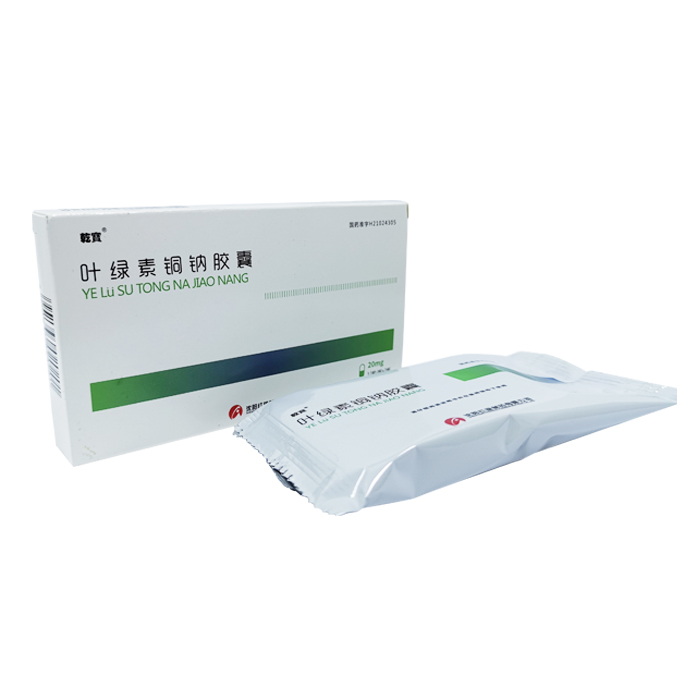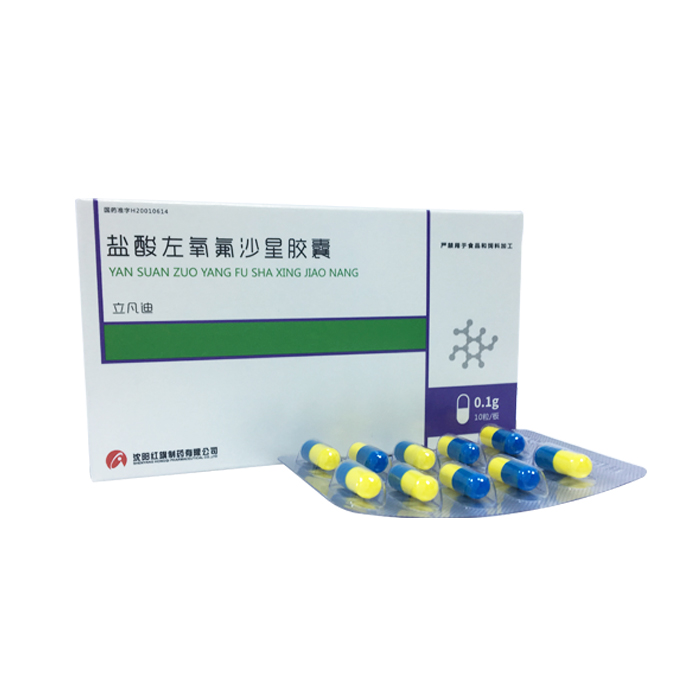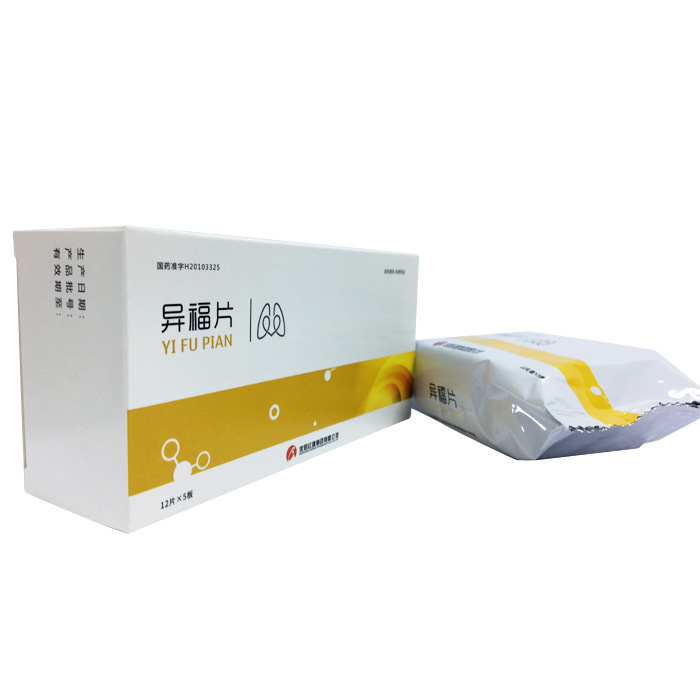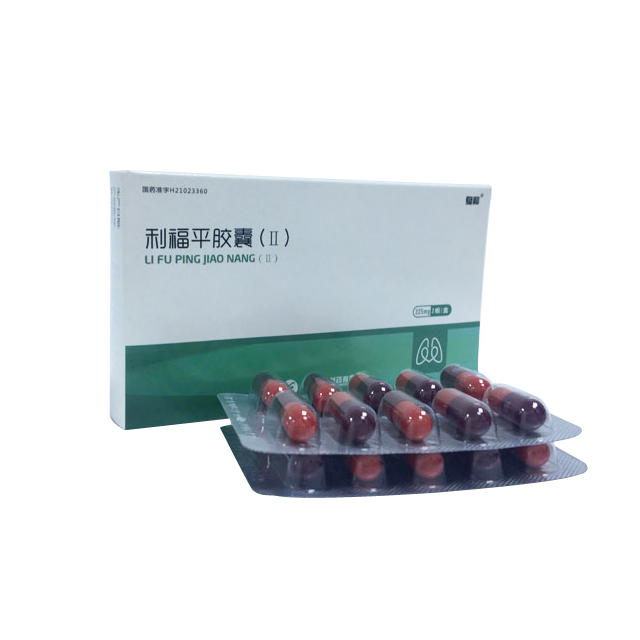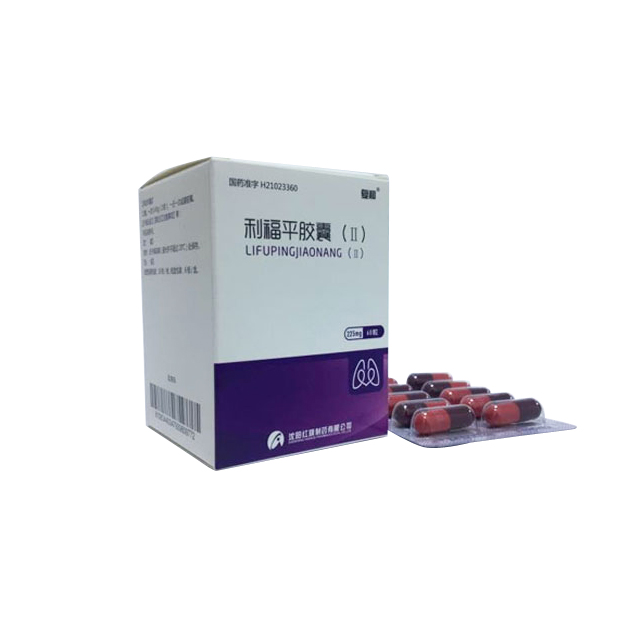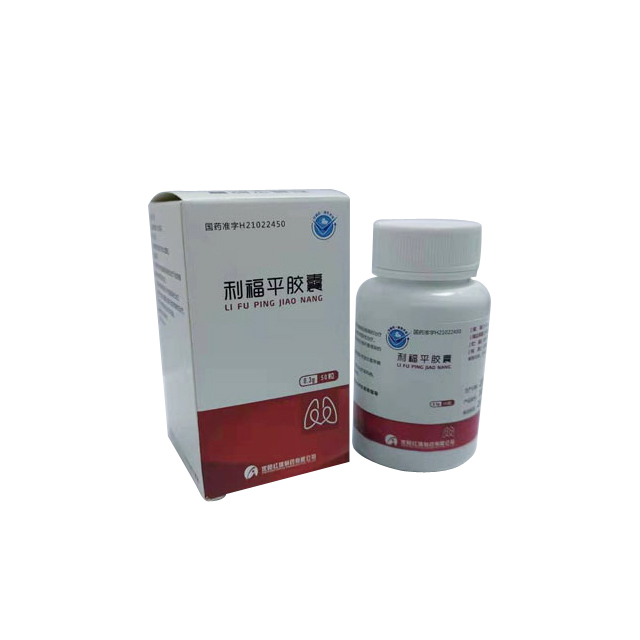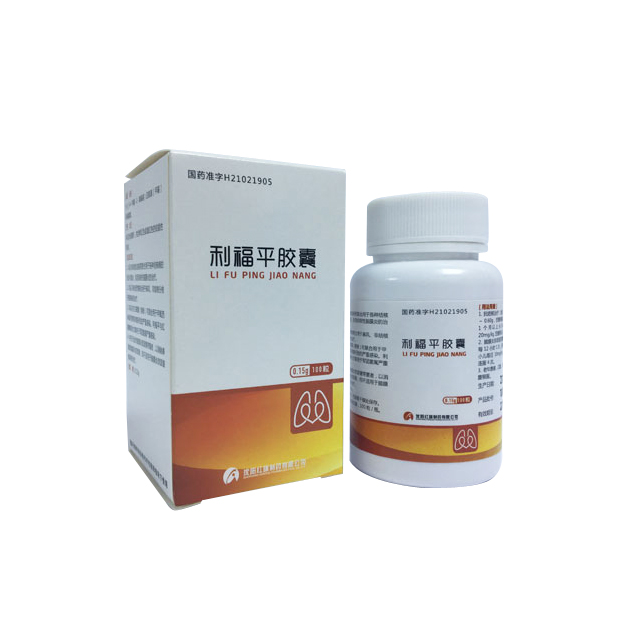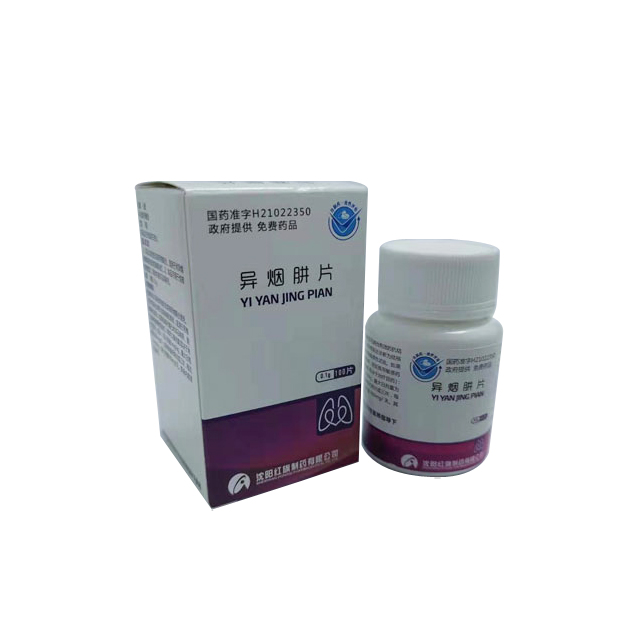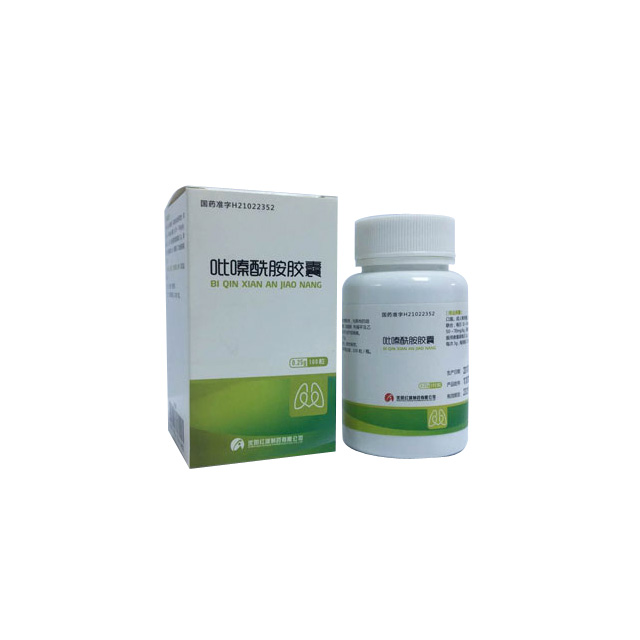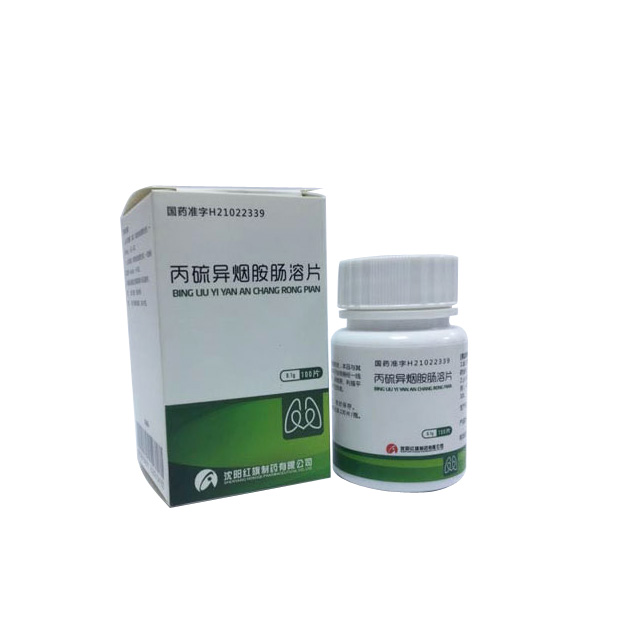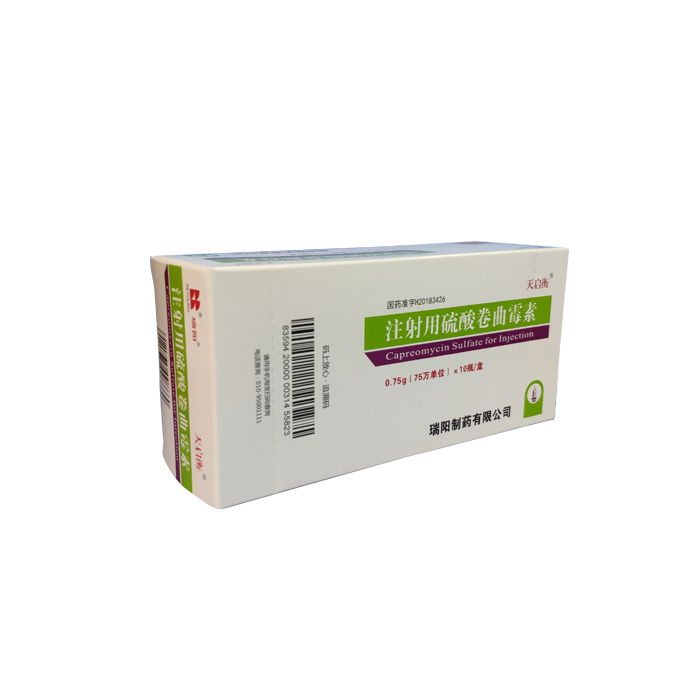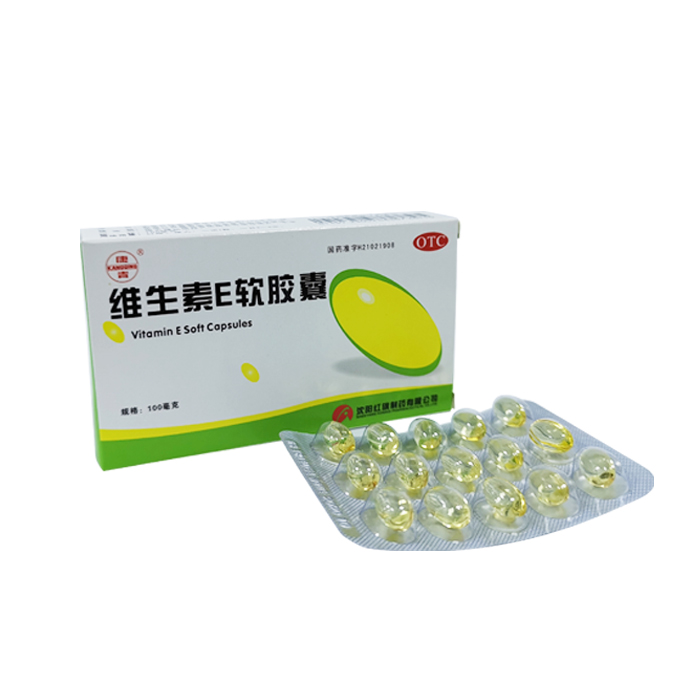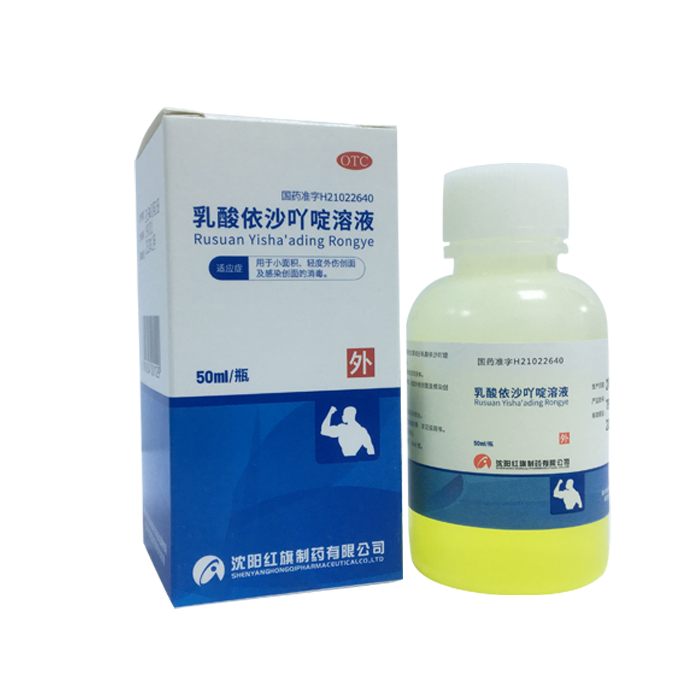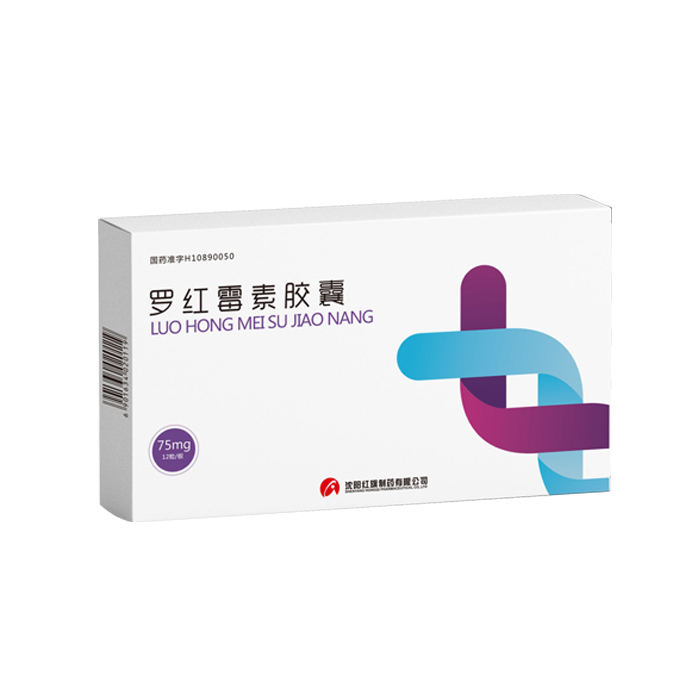
Number of views:
1000
Pyrazinamide Tablets(0.25g)
Retail price
0.0
元
Market price
0.0
元
Number of views:
1000
Product serial number
Quantity
-
+
Stock:
Category
1
Product description
Parameters
Pyrazinamide Tablets Instructions
Please read the instructions carefully and use it under the guidance of a physician

【Drug Name】
Generic name: pyrazinamide tablets
English name: Pyrazinamide Tablets
Chinese Pinyin: Biqinxian'an Pian
【Ingredients】
Chemical name: Pyrazinamide
Chemical Structure:

Molecular formula: C5H5N3O
Molecular weight: 123.12
【Properties】
This product is white or almost white film.
【Indications】
This product is only effective against mycobacteria and is used in combination with other anti-tuberculosis drugs (such as streptomycin, isoniazid, rifampicin and ethambutol) in the treatment of tuberculosis.
【specification】
0.25g
【Dosage】
oral. Common dosage for adults, combined with other anti-tuberculosis drugs, 15-30mg/kg a day, or 50-70mg/kg, 2-3 times a week; daily maximum 2g daily, 3 times a week maximum 3g each time, up to 4g each time for 2 times a week.
【Adverse reactions】
General adverse reactions
Fever, porphyria and dysuria are rarely reported. Gout (see [Precautions]).
Gastrointestinal reaction
The main adverse reaction is liver reaction (see warning). Hepatotoxicity is dose-related and can occur at any time during treatment. Gastrointestinal disorders have also been reported, including nausea, vomiting and anorexia.
Blood and lymph
This product rarely occurs thrombocytopenia and red blood cell anemia with red blood cell proliferation, red blood cell vacuolation and elevated serum iron concentration. The pathogenesis of adverse coagulation reactions is also rarely reported.
other
Mild arthralgia and myalgia are frequently reported. Allergic reactions that have been reported include skin rash, urticaria, and itching. Fever, acne, photosensitivity, porphyria, dysuria, and interstitial nephritis are rarely reported.
【Taboo】
Pyrazinamide is contraindicated in the following people:
·Severe liver damage.
·Allergic to this product.
·Severe gout.
【caveat】
Patients should measure the basic values of serum uric acid and liver function before medication. Patients who already have liver damage or who are at higher risk of drug-induced liver damage (eg, alcoholics) should be closely monitored.
When there is liver damage or increased uric acid associated with gouty joints, pyrazinamide should be discontinued and should not be used again.
【Precautions】
General rule
Pyrazinamide inhibits the excretion of uric acid by the kidneys, often leading to asymptomatic hyperuricemia. When hyperuricemia is accompanied by acute gouty arthritis, pyrazinamide should be discontinued.
Patients with a history of diabetes should be more cautious when using pyrazinamide, and it will be more difficult to manage medication.
The primary resistance of Mycobacterium tuberculosis to pyrazinamide is not common. If drug resistance is known or suspected, it needs to be cultured in vitro and tested for sensitivity to pyrazinamide and commonly used first-line drugs. There is a lack of reliable in vitro resistance testing methods for pyrazinamide. The above experiments need to be carried out in a verified laboratory.
Cross allergy, patients allergic to ethionamide, isoniazid, niacin or other drugs with similar chemical structure may also be allergic to this product.
Information for patients
If the patient has the following symptoms, the doctor should be notified as soon as possible: fever, loss of appetite, fatigue, nausea and vomiting, dark yellow urine, yellowish skin and eyes, joint pain or swelling.
During the treatment process, the medication plan must be followed, and it is important to emphasize that there should be no missed doses.
Laboratory testing
Basic liver function studies [especially alanine aminotransferase ALT (SGPT) and aspartate aminotransferase AST (SGOT) testing] and uric acid levels should be performed before treatment. This product can increase the measured values of alanine aminotransferase, aspartate aminotransferase, and blood uric acid concentration. Appropriate laboratory tests should be performed regularly or when any clinical symptoms or symptoms appear during treatment.
Drug/Lab Test Interaction
It has been reported that pyrazinamide interferes with urine ketone body test piece ACETEST® and urine ketone body test KETOSTIX®, resulting in powder-brown color.
Carcinogenicity, mutagenicity, impaired fertility
After pyrazinamide was administered in the diet of rats and mice at a concentration of up to 10,000 ppm, biological life span was measured. It is estimated that the daily dose for mice is 2 g/kg, or 40 times the maximum human dose; the daily dose for rats is 0.5 g/kg, or 10 times the maximum human dose. Pyrazinamide has no carcinogenic effect in rats or male mice; due to the insufficient number of surviving control mice, no conclusion can be drawn for female mice.
Pyrazinamide showed no mutagenic effects in the Ames bacterial test, but it can induce chromosomal aberrations in human lymphocyte cultures.
Pregnancy: Teratogenic Effects-Pregnancy Category C
Animal reproduction studies have not been conducted on pyrazinamide. It is also unclear whether pyrazinamide will cause fetal damage or affect reproductive capacity when administered to pregnant women. Pyrazinamide should only be given to pregnant women when clearly needed.
[Medicine for pregnant women and lactating women]
Pregnant women with tuberculosis can be treated with isoniazid, rifampicin and ethambutol for 9 months first. Those who are resistant to any of the above drugs and may be sensitive to this product may consider using this product. A small amount of pyrazinamide has been found in breast milk. Therefore, considering the risks and advantages of this treatment, it is recommended to use pyrazinamide with caution in nursing mothers. This product belongs to FDA category C of pregnancy drugs.
【Children's Medication】
This product is highly toxic and should not be used by children. When it must be applied, it must be decided after weighing the pros and cons.
【Geriatric Medication】
Clinical studies of pyrazinamide do not include a sufficient number of patients 65 years and older to determine whether they respond differently to younger patients. Other clinical application reports did not determine the difference in response between elderly and young patients. Generally speaking, elderly patients should be cautious in choosing the dose, usually starting from the low end of the dose range, because the elderly often have liver or kidney function decline, concomitant diseases or use other drugs.
Patients with impaired renal function do not need to reduce the dose. However, the dosage should be chosen carefully at the low end of the dosage range.
【medicine interactions】
(1) Combining this product with allopurinol, colchicine, probenecid and sulfopridone can increase the blood uric acid concentration and reduce the efficacy of the above drugs on gout. Therefore, the dose should be adjusted when combined to control hyperuricemia and gout.
(2) It can enhance adverse reactions when combined with ethionamide.
(3) The blood concentration of cyclosporine and pyrazinamide may decrease when the former is used together, so blood concentration should be monitored and the dose adjusted accordingly.
【Overdose】
Experience with overdose is limited. In an overdose case report, there was an abnormal liver function test. The symptoms disappeared after stopping the drug. Clinical monitoring and supportive therapy should be used. Pyrazinamide can be removed by dialysis.
【Pharmacology and Toxicology】
This product has a good antibacterial effect on human tuberculosis bacillus. It has the strongest bactericidal effect at pH 5 to 5.5. It is especially the best bactericidal drug for the tuberculosis bacteria in the phagocytes that grow slowly in an acidic environment. The inhibitory concentration of this product in the body is 12.5μg/ml, up to 50μg/ml can kill Mycobacterium tuberculosis. The concentration of this product to inhibit Mycobacterium tuberculosis in the cell is 10 times lower than that in the outside of the cell, and it has almost no antibacterial effect in a neutral and alkaline environment. The mechanism of action may be related to pyrazinic acid. After pyrazinamide penetrates into the phagocytes and enters the Mycobacterium tuberculosis, the amidase in the bacteria removes the amide group and converts it into pyrazinic acid to exert antibacterial effects. In addition, because pyrazinamide is similar in chemical structure to nicotinamide, it interferes with dehydrogenase by replacing nicotinamide, prevents dehydrogenation, hinders the use of oxygen by Mycobacterium tuberculosis, and affects the normal metabolism of bacteria, causing death.
【Pharmacokinetics】
Pyrazinamide is well absorbed in the gastrointestinal tract, reaching the peak plasma concentration within 2 hours. When the administered dose is 20 to 25 mg/kg, the plasma concentration usually ranges from 30 to 50 μg/mL. Pyrazinamide can be widely distributed in body tissues and body fluids, including liver, lung and cerebrospinal fluid (CSF). In patients with meningitis, the CSF concentration is almost equal to the steady-state plasma concentration. The plasma protein binding rate of pyrazinamide is approximately 10%.
The half-life of pyrazinamide in patients with normal liver and kidney function is 9 to 10 hours. The half-life of patients with liver and kidney damage may be prolonged. Pyrazinamide is hydrolyzed in the liver to its main active ingredient pyrazinic acid. Pyrazinic acid is hydrolyzed into 5-hydroxy pyrazinic acid, the main excreta.
Approximately 70% of the oral dose of the drug is excreted in the urine, mainly through the internal glomerular filtration within 24 hours.
The antibacterial or bactericidal effect of pyrazinamide on Mycobacterium tuberculosis depends on the concentration of the infected site. The mechanism of action is unclear. The drug is only active at lower pH values in vivo and in vitro.
【Storage】
Shading, sealed and preserved.
【package】
Packed in plastic bottle, 100 tablets/bottle.
【Validity Period】
24 months
【Executive Standard】
YBH06832018
【Approval Number】
National Medicine Standard H21022354
【manufacturer】
Company Name: Shenyang Hongqi Pharmaceutical Co., Ltd.
Production address: No. 6, Xinluo Street, Hunnan New District, Shenyang City
Postal Code: 110179
Phone number: (024) 23786260 23786261
Fax number: (024) 23786263
Website: www.hongqipharma.com
Scan the QR code to read on your phone
Scan the QR code to read on your phone
Previous
Isoniazid Tablets(0.1g)
相关产品


Copyright hongqipharma.com All rights reserved Powered by:300.cn Shenyang 辽icp备12005917号-1 (辽)-非经营性-2018-0012
Add:Shenyang Hunnan New District envelope 6th Street Tel:024-23786268-8012 Fax:024-23786263



